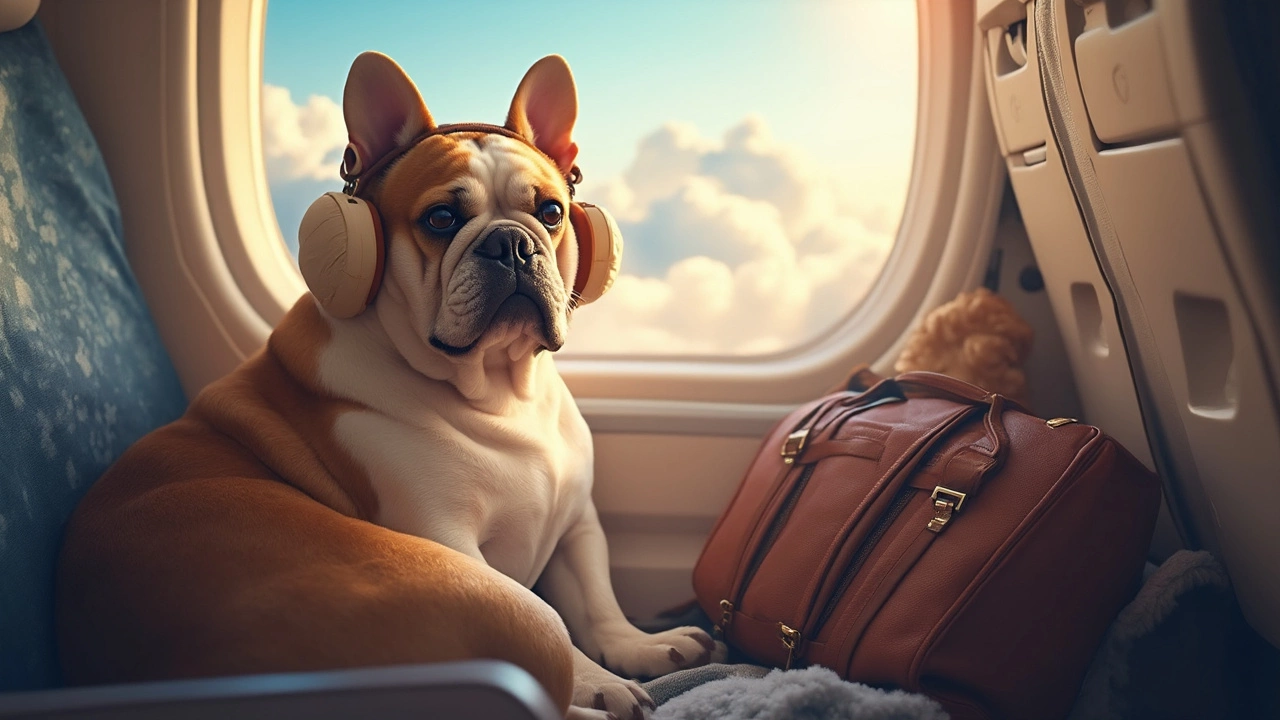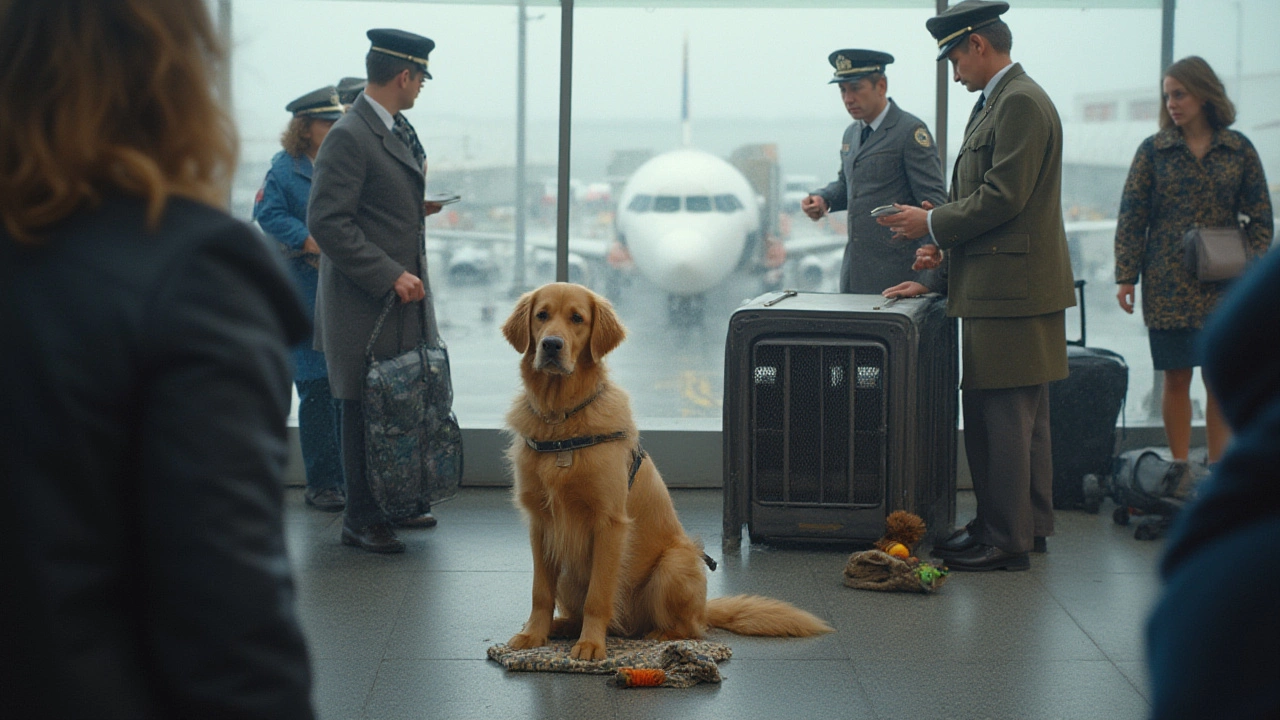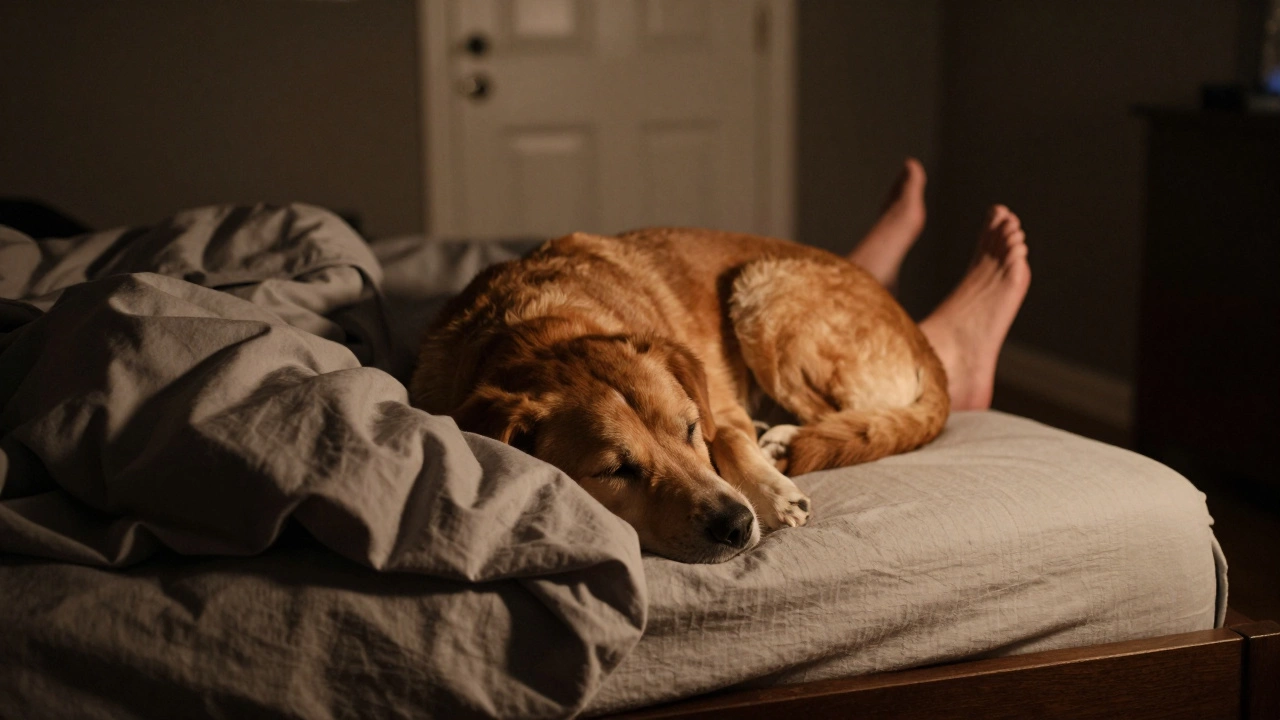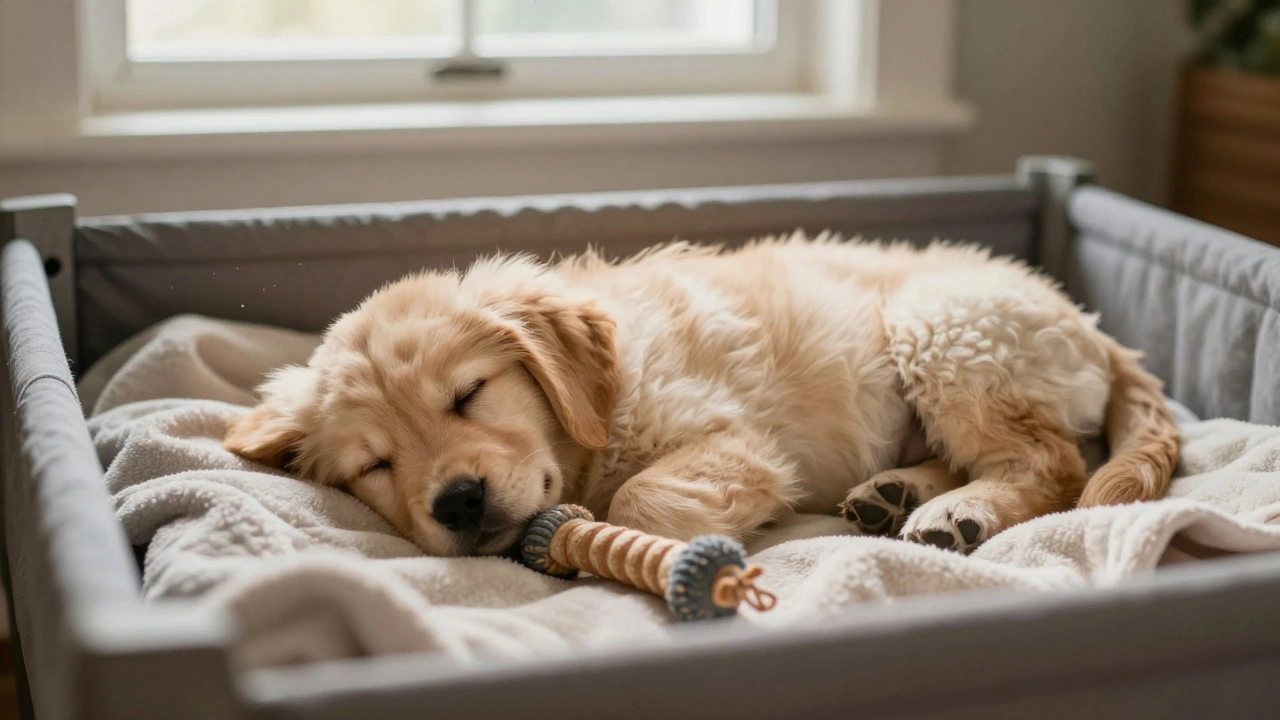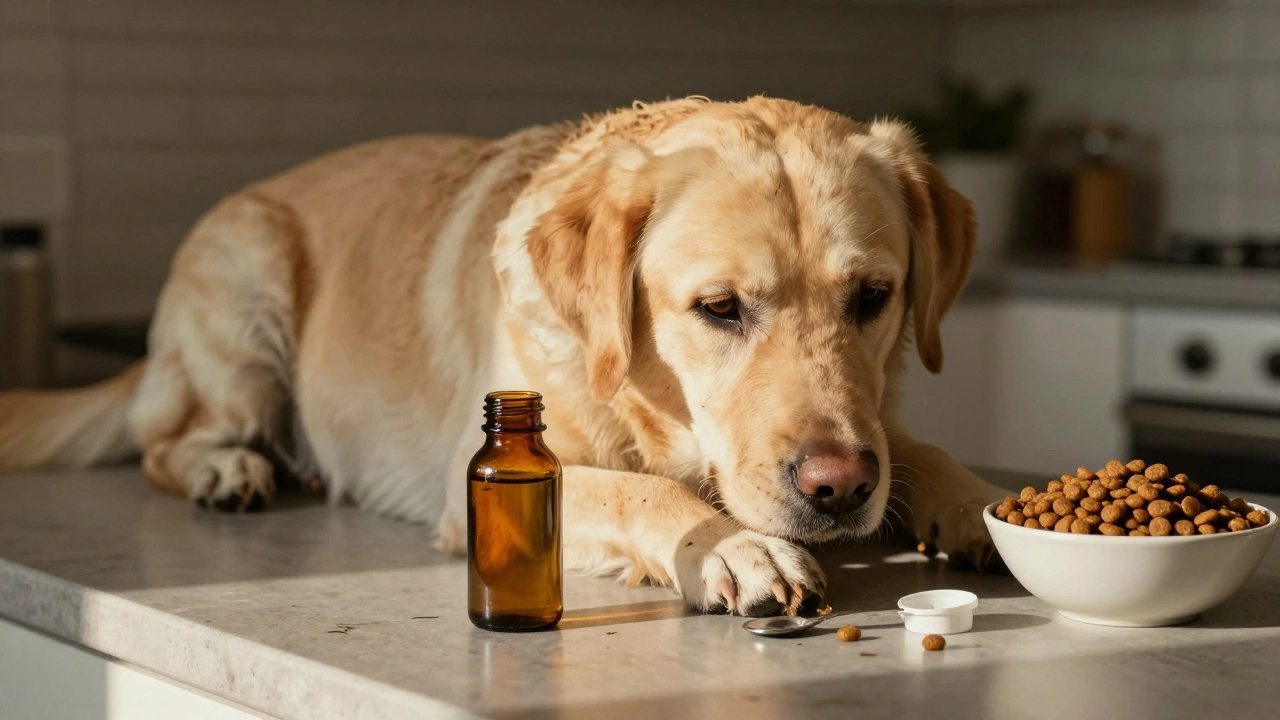So, you've booked your flight, and your furry friend is tagging along for the adventure. But have you ever thought about how flying might affect your dog's ears? Much like us humans, dogs can experience discomfort when there's a sudden change in air pressure, like in an airplane cabin. This can lead to those all-too-familiar ear-popping sensations.
Dogs have similar ear structures to humans, which means they can feel changes in pressure. Ever seen your dog shaking its head or pawing at its ears mid-flight? Yep, that's a sign those cute ears might be feeling a bit uncomfortable.
If you’re planning to take your pooch on a plane, you’d want to ensure they are as comfy as possible. Keep reading to find out how you can make air travel smooth sailing—or smooth flying, in this case—for your furry buddy.
- Understanding Air Pressure Changes
- How Dogs’ Ears Function
- Signs of Ear Discomfort in Dogs
- Tips for a Comfortable Flight
- Pre-Flight Preparations
- Veterinary Advice and Recommendations
Understanding Air Pressure Changes
Ever felt your ears pop during a flight? It’s all about the changes in cabin pressure. When a plane ascends or descends, the air pressure around you shifts rapidly, and this can really mess with your ears. The Eustachian tube, a small passage in our ears, helps balance the pressure between the outer environment and the middle ear. For dogs, it works similarly, but they can't pop their ears like we do. This makes air travel tough on those delicate dog ears.
The problem is that pressure changes most during takeoff and landing. The quicker the change, the more your dog's ears might hurt. Ever seen your dog yawn or swallow more during these moments? These actions can help adjust pressure, but sometimes it's not enough, and discomfort persists.
Dogs, unlike humans, can’t communicate discomfort easily. So, it’s crucial to observe any signs of distress such as whining or restlessness during flights. Understanding these pressure changes can better prepare you for the journey and help keep your buddy calm and comfortable.
Plan ahead to manage these pressure swings. Maybe pack chewy treats or toys to encourage yawning and help your dog adjust their ear pressure naturally. Also, check with your vet to see if they recommend any protective ear gear designed specifically for airplane travel with dogs.
How Dogs’ Ears Function
Alright, let's get into the nitty-gritty of those floppy, furry ears of your canine buddy. Dogs' ears are more than just cute—they play a crucial role in how your pup experiences the world. You see, a dog's ear is divided into three parts—outer, middle, and inner ear—and each has a job to do.
The outer ear, which you might see flapping in the wind, catches sound waves and directs them down the ear canal. This helps your dog hear those whisper-quiet calls to dinner from the other room! Now, inside the middle ear, there's a tiny drum known as the eardrum, and beyond it is the inner ear where things get a bit more complex. This part is all about maintaining balance and movement.
Here's a fun fact: dogs can hear frequencies as high as 65,000 Hz, which is more than three times higher than humans! That's why your pup might react to sounds that you can't even hear. But when it comes to flying, their super-sensitive hearing isn't always an advantage.
When a plane ascends or descends, there's a rapid change in air pressure. Dogs' ears, similar to ours, have Eustachian tubes. These tubes help equalize pressure between the middle ear and the atmosphere. However, sometimes these tubes can't adjust quickly enough, leading to discomfort, especially for dogs not used to flying.
Understanding how dogs’ ears function is key when planning to take your furry friend on a flight. This knowledge arms you with what to look out for and how to help, making the journey a breeze for both you and your dog.
Signs of Ear Discomfort in Dogs
Recognizing signs of ear discomfort in your pooch while flying can be a lifesaver. Dogs can’t just tell you when their ears hurt, so knowing what to look for can make all the difference.
Some common indicators that your dog's ears might be bothering them on a flight include head shaking, consistent scratching at their ears, whining, or an increased level of anxiety. You might also notice they’re unusually restless or can't seem to settle down.
Pay special attention to any changes in their behavior. If your usually calm dog suddenly becomes anxious or agitated during takeoff or landing, it might be a response to the cabin pressure changes affecting their ears.
- Head Shaking: Like when they have water in their ears after a bath. It's their way of trying to equalize the pressure.
- Scratching at Their Ears: Keep an eye out if they’re doing this more than usual. It’s often a reaction to discomfort.
- Whining or Whimpering: If they’re vocalizing more than usual, especially during pressure changes, it could be ear discomfort.
- Increased Anxiety or Restlessness: Pacing up and down or restlessness during the flight could be a sign.
Now, here's a handy table with some data you might find useful:
| Behavior | Possible Cause |
|---|---|
| Head shaking | Pressure imbalance |
| Whining | Discomfort |
| Scratching | Irritation or pressure change |
Understanding these signs can help you take quick action. Maybe offer them a chew toy, which might help them 'pop' their ears just like chewing gum does for us. It's all about making the flight as smooth as possible, for both of you.
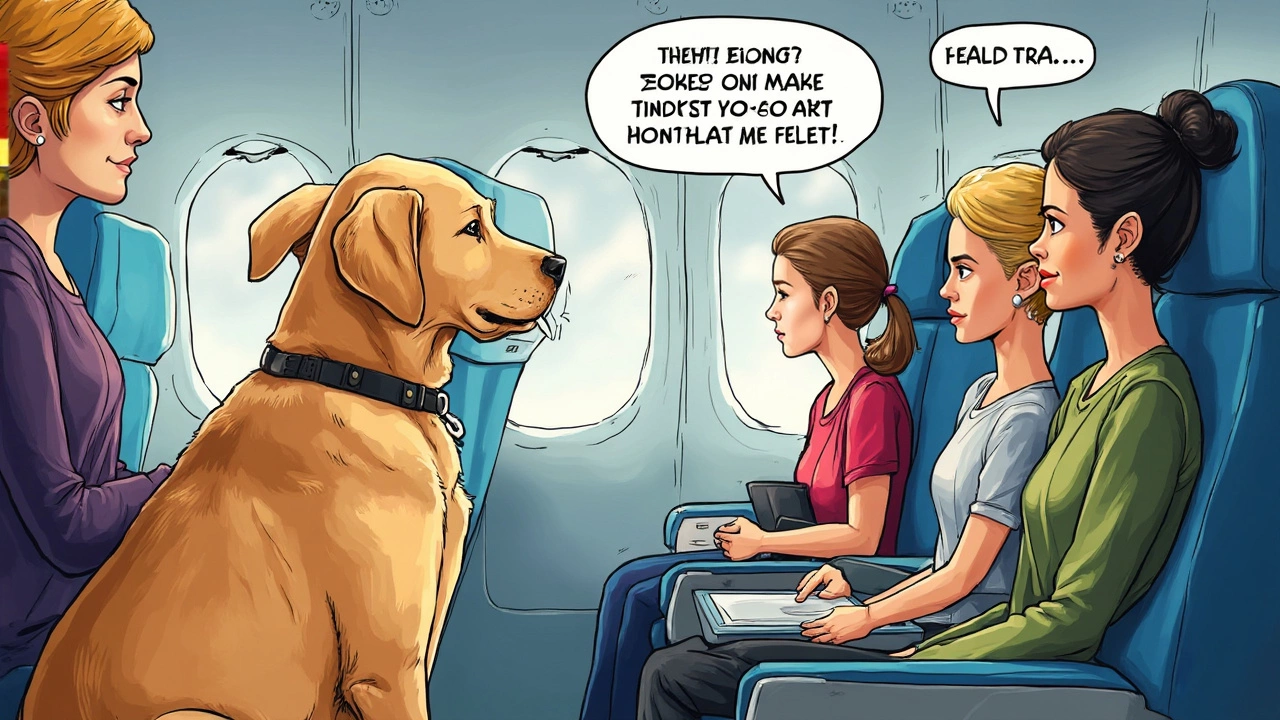
Tips for a Comfortable Flight
Making sure your dogs flying experience is as stress-free as possible takes a bit of prep work. Here are some solid tips to ensure your furry buddy is comfy up in the air.
- Acclimate to the Carrier: Before you even hit the airport, get your dog used to their travel carrier. Leave it open at home with a cozy blanket and some treats to encourage them to explore. This way, it feels like a familiar and safe place.
- Hydration is Key: Keep your dog well-hydrated both before and during the flight. But do this wisely so they don't have to hold it in for too long. A little water goes a long way—just don't drown them in it.
- Use Ear Protection Tools: Some pet stores offer earplugs or mufflers designed for dog ear health during flights. They can help ease pressure changes. Just ensure they fit well so your pup isn’t trying to shake them out the whole flight!
- Chew it Out: Just like humans, dogs can benefit from chewing to help equalize ear pressure. Bring along their favorite chew toy or some treats to gnaw on during takeoff and landing. It'll help with the ear pressure and keep them entertained.
- Book a Direct Flight: If you can, opt for a direct flight. Layovers mean more landings and takeoffs, which can be tough on a dog's ears. Less commotion also reduces stress levels.
- Keep it Calm: Staying relaxed can really help your dog. Consider using a calming spray or even a vet-recommended sedative if your dog gets particularly anxious during travel.
Remember, you know your pet best. What works wonders for one dog might not suit another. The main goal is to ensure that air travel is just another walk in the park for your canine companion.
Pre-Flight Preparations
Getting ready for a flight with your loyal buddy? Prepping your trip goes beyond just packing their favorite toy. It's key to get everything right before stepping onto that plane.
First off, check with your airline about their pet travel policies. Different airlines have different rules, and these can affect how comfy the trip is for your pooch. Make sure they allow dogs flying in the cabin if that's your plan. Also, some places require specific vaccinations or documentation, so get that sorted well ahead of time.
Before the big day, pay your vet a visit. A quick check-up can help catch any potential issues that might make flying uncomfortable, like ear infections. Vets often advise using ear drops before take-off to help with pressure changes.
While you're at the pet store, consider buying a good travel crate. Look for something with proper ventilation and enough room for your dog to stand and turn around. Having their favorite blanket or a comforting item from home can make a strange place feel a bit more familiar.
Hydration is super important. You don’t want your dog to be thirsty during the flight. You might want to reduce their water intake a little right before flying to avoid mid-air bathroom breaks, though.
A handy tip is to tire out your dog with a walk or a play session before heading to the airport. A sleepy dog is often a relaxed dog, which could mean a quieter flight for everyone.
And last but not least, check-in early. This gives you time to solve any last-minute issues and reduces stress for you and your pup.
- Check airline pet policies
- Visit a vet
- Get a travel crate
- Keep them hydrated
- Exercise before the flight
- Check-in early
Remember, good planning now can lead to an easier trip later, making it a pleasant flying experience for both you and your furry pal.
Veterinary Advice and Recommendations
Before you start packing for your dog’s next airborne trip, consider having a chat with your vet. Veterinarians can provide personalized advice based on your pup’s health history. If your dog has had ear issues in the past, this step is super important.
Some vets suggest using ear plugs specifically designed for dogs flying. These little wonders can help stabilize pressure changes and ease discomfort. If you can't get hold of those, calming supplements might also be recommended to keep your pet relaxed during the flight.
It’s also worth discussing any medications your dog might need. For pups that are prone to anxiety or have sensitive ears, your vet might prescribe something to make the journey smoother.
| Concern | Recommended Actions |
|---|---|
| Ear Discomfort | Ear plugs, calming supplements |
| Anxiety | Veterinary-prescribed medication |
| Pre-existing Conditions | Thorough vet check-up |
Regular ear checks are a must, especially if you travel often. If your dog shows signs of ear infections after flights—think head shaking or pawing at the ears—get in touch with your vet ASAP.
Remember, happy travels start with good prep. Following these pet travel tips will help ensure that your four-legged buddy enjoys the journey as much as you do!

